Mute Swan
(Cygnus olor).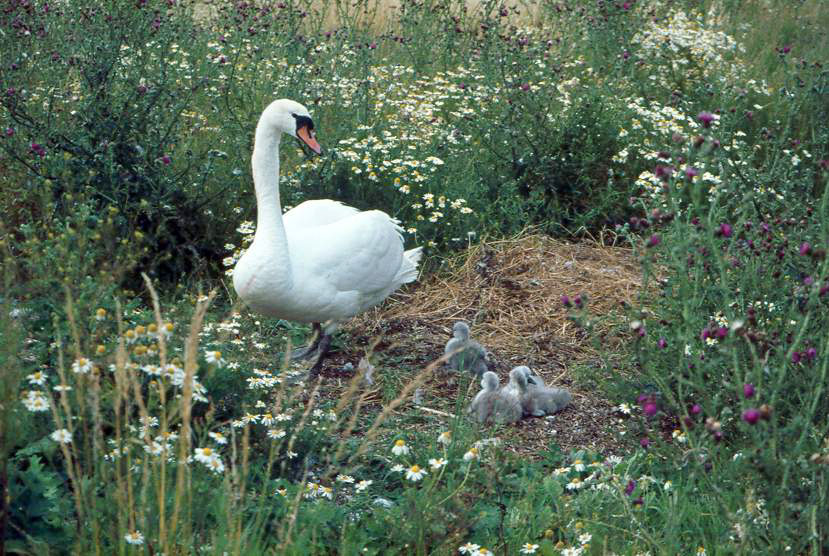 Female with newly-hatched chicks.
Female with newly-hatched chicks.
All year round the Mute Swan is one of the most conspicuous species on the fjord.
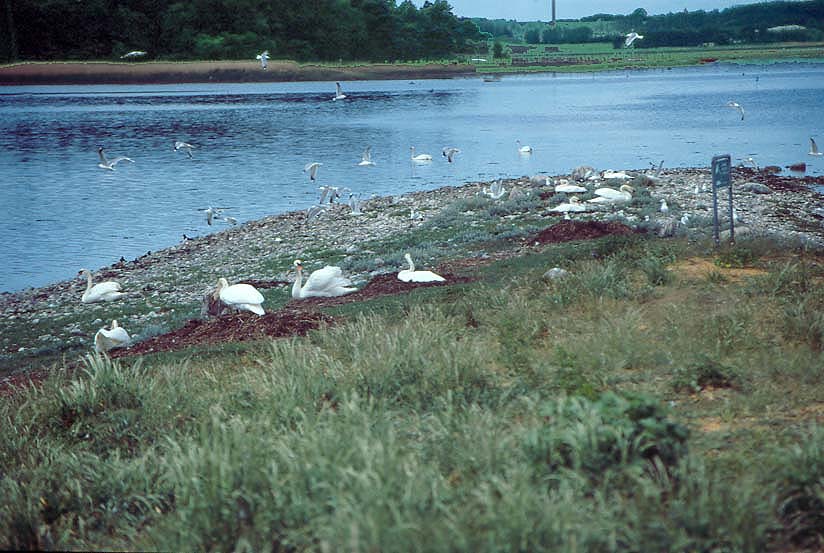 The colony on Kølholm.
The colony on Kølholm.
It has not always bred on the fjord, but since the first colony was found on Sivholm in 1954 it has adopted all the islands as breeding grounds.
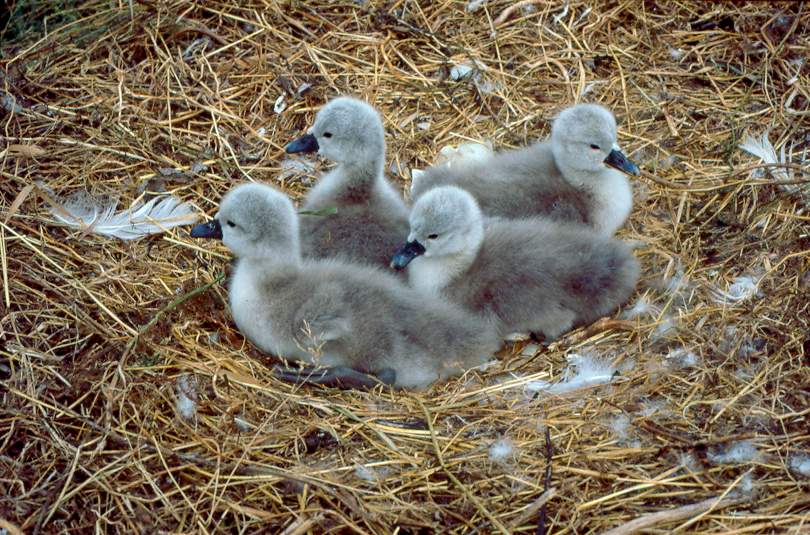 Newly-hatched chicks.
Newly-hatched chicks.
In the middle of April the swans build their nests, which are often 5-10 metres apart. The eggs are not laid until May (about 5 eggs per nest) and the young hatch out in June.
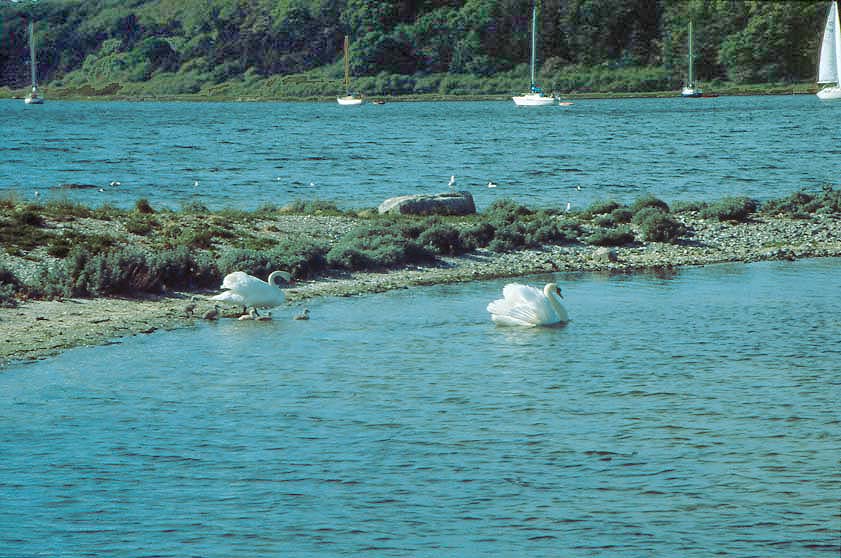 Taking the chicks out onto the fjord.
Taking the chicks out onto the fjord.
When the young are a couple of days old the parents take them to a territory on the coast, where they occupy a stretch of about half a kilometer. The family stays here until the young are able to fly. A large proportion of the broods are lost, either before the young hatch or during their first days of life. By July over half the pairs have no young and less than a third of the eggs have produced cygnets that have survived this long. The numbers vary enormously from one year to the next. In 1996 and 2002-2004 there were almost no cygnets raised in the fjord. As soon as they hatched they died of unknown causes.
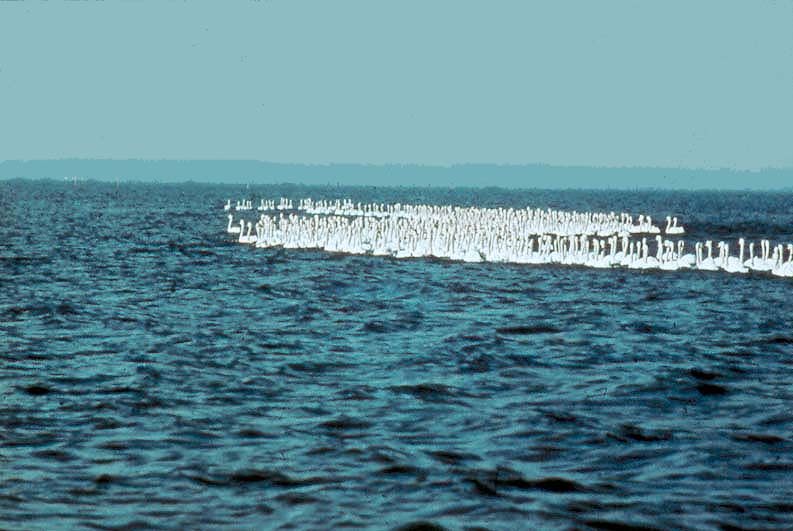 A flock of moulting swans on Ægholm.
A flock of moulting swans on Ægholm.
In July the swans shed their flight feathers. During this period, which lasts about 5 weeks, they are unable to fly. They gather in large flocks in shallow areas with a plentiful supply of eelgrass. One of the biggest of such areas is Ægholm flats, where there might be as many as 1500 moulting swans. These flocks are joined by swans from the lakes in north Zealand, whilst the breeding swans wait until September, when their young are able to fly, before shedding their flight feathers.
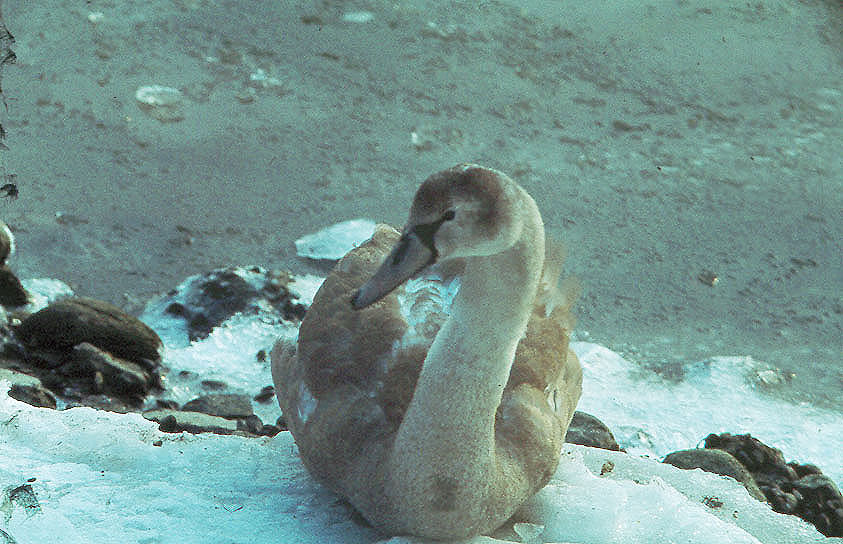 A cygnet dying in a hard winter.
A cygnet dying in a hard winter.
Swans’ survival in winter depends on the weather. In hard winters almost all the young and a large number of adults die but in mild winters the losses are much smaller.
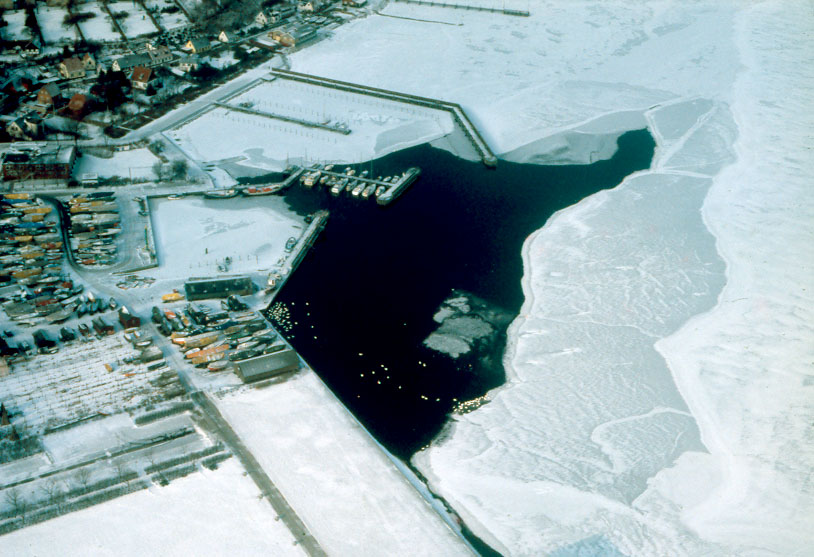 Waste water creates a gap in the ice in Roskilde harbour.
Waste water creates a gap in the ice in Roskilde harbour.
If there is a hard winter after several mild winters the mortality rate can be extremely high – but such is life. For many people, especially children, a winter visit to the harbour with a bag of bread is a great experience – a chance to get close to these impressively big and beautiful birds.
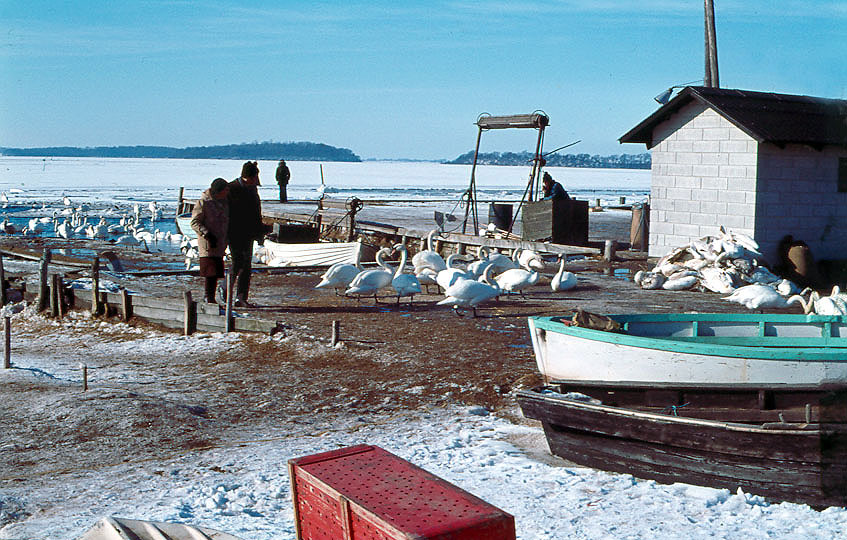 A hard winter. Note the pile of dead swans by the building..
A hard winter. Note the pile of dead swans by the building..
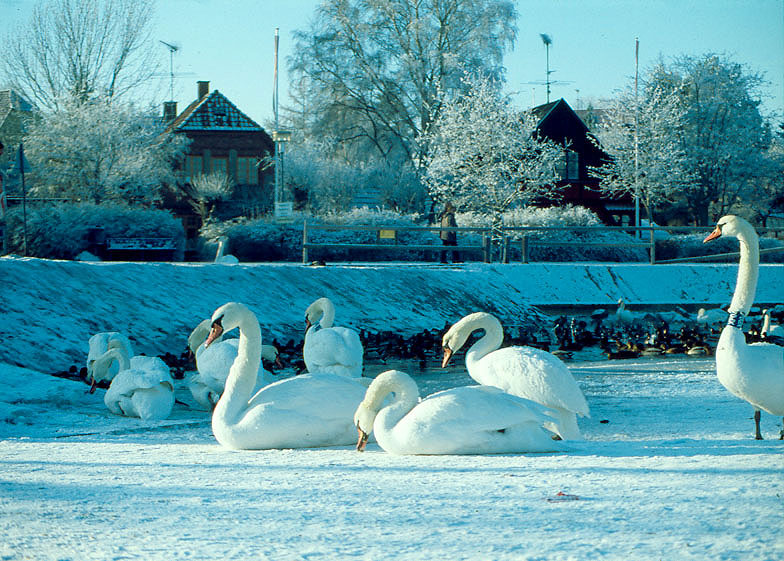
Swans on the ice in Roskilde harbour.
The swan population peaked in the early 1990s, when the winter population was up around 7,000, but it has fallen to about 4,000 in the last few years. This is probably due to the reduced quantities of sea lettuce etc, as better sewage treatment has meant that there is less phosphate in the water. The breeding failures have also contributed to the swan population’s decline.
Key to the Distribution Map.
Mute Swan - population trends
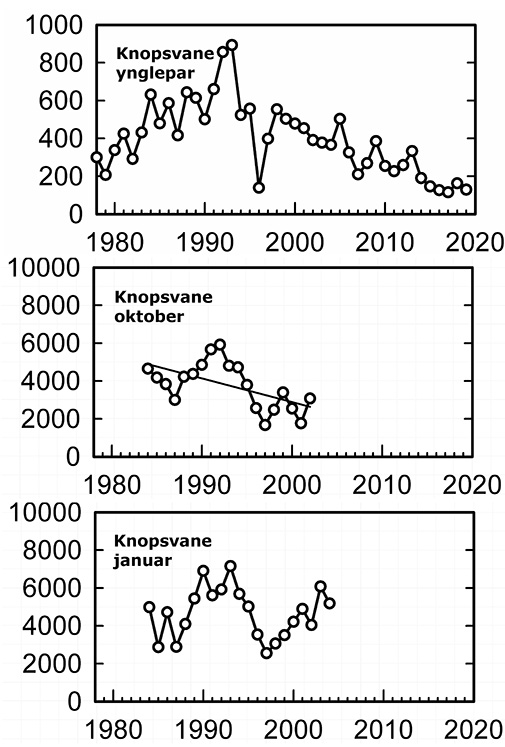
Mute Swan breeding pairs
Mute Swan October
Mute Swan January
